
Lightweight, minimalist shell clothing designed primarily for capable climbers, the M10 Storm Jacket and complementing Storm Pants have a natural home in the Alps or on the granite spires of Patagonia's namesake region. Skiers might like the jacket too. But does the range also have a potential role in the grittier and less glamorous Scottish winter? Very much so, we think, with the Pants in particular offering something far different from the norm. But as with all lighter shells, there are limits to this gear in terms of both weather and rough usage.
In use
I've been using this getup throughout the winter season so far, for hillwalking and climbing. Performance in both waterproofness and breathability has been great, and so too is the amount of movement afforded by the cut and fabric. For climbing and mountaineering this combination of top and bottoms is spot on; and while it's arguably over-expensive for a winter walker I have to admit I've also got on really well with the jacket as a lighter shell/windproof for all-round hill use, particularly on faster moving days. The Pants, though, are more specialised.
All this said, the M10 Storm range can't be considered a cover-all solution for winter mountains. Wilder Scottish weather pushes the remit of its light fabric, and on stormy days I have opted for thicker shell protection - something in chunky Gore Pro. Likewise, this expensive jacket and trousers are not going to fare well in repeated brushes with rough rock. Deep Cut Chimney in a January blizzard? No thanks. Spring ice climbing on Ben Nevis in fair to middling weather? M10 Storm would be brilliant, and maybe save you a couple of hundred grams.
Fabric
While Gore-Tex still dominates the market, many brands are using alternative waterproof fabrics. There's more than one way to skin a cat after all. For their fabrics developed in-house Patagonia have their own H2No standard for waterproofness, surface repellence, breathability and longevity, which sounds about as rigorous as other testing standards.
The no-name three-layer fabric in the Storm Jacket and Pants uses a 30D recycled nylon outer. It feels every bit as waterproof as its rivals, and in use seems breathable enough to cope with working and sweating hard on the walk-in. As with all modern shells with no PFAS, the DWR is not as D as those of old, and needs frequent washing to go on R-ing the W.
A tiny bit of mechanical stretch in the fabric is a welcome complement to the active cut. This is lightweight stuff though, which obviously has pros and cons. On the plus side, who wants to carry more weight? On the other hand, the fabric is so thin that it deflects and flaps a lot in the wind, so you do not feel as armoured from the elements as in a heavyweight mountain shell. It may have been designed with Denali or the Himalaya in mind, and they do get weather too, but to my mind it is not for a proper Scottish hoolie. And while I've yet to cause damage, I don't think it would take many mixed climbs or brushes with crampon points to add some perforations.
Jacket - £360
This is a very good lightweight alpine shell, and arguably more versatile than the Pants thanks to its rather more conventional cut and features. A half-zip anorak version is also on offer to the most dedicated minimalists, but we're looking here at the full-zip.
Fit
The jacket is available for both men and women, and described as slim fitting. US sizing often seems roomier than European, and my standard 'Large' is indeed on the spacious side. There's room to fit the jacket over a couple of warm layers (base layer, midweight fleece and light gilet is my current preferred winter climbing clobber); but it's not so bulky that you can't easily don a belay jacket over the top. For a stripped-down climbing shell the cut seems spot on.
There's loads of length in the body, with the hem sitting well below waist level and covering most of the bum for maximum weather protection. On the downside I get a little hem lift with raised arms, and in my experience this jacket is not entirely immune from riding up under a harness; it can be annoying to have to tug it back down after every couple of pitches. When it comes to mobility and hem lift, so much comes down to personal fit, and you may get on better than me. You'll only know if you try it on in a shop.
Sleeve length is generous too. I do, however, find the fit at elbow and forearm rather close, and I'm reliant on the fabric's stretch for full arm mobility. For a mountain shell the cuffs are borderline small, and while this gives you a neat and streamlined wrist for climbing, it's a struggle (though possible) to pull them over bulkier winter gauntlets.
Hood
This fits over a helmet, while also tightening up reasonably successfully on a bare head. Without the bulk of the helmet, though, the brim does tend to flop down over your eyes. It is only minimally structured, making it quite flappy in the wind - hardly a surprise given the nature of this shell, but not optimum for less-friendly Scottish walk-ins.
Weight
At a scanty 345g in my size L, the M10 Storm Jacket is notably light for a shell with a technical alpine remit - and that magic combination of lightness, active cut and just-enough-features is its key calling card. This is a jacket you can chuck in your pack for just about any occasion, barely noticing it's there, but it's also a proper mountain shell when needed.
Features
The two fairly generous chest pockets are big enough for ski gloves, and though equal on the inside they have different sized openings - the rationale being that the smaller zip makes one of the pockets more secure for carrying your phone or sunglasses (I prefer to keep my phone warm in an inner layer). While the jacket stows in a pocket for easier carrying, there is no hang tag for clipping it to your harness - to my mind an unfortunate omission.
You get a waterproof main zip with a double zipper. There's also a built-in RECCO reflector, which boosts safety.
Pants - £270
While the Jacket is a good all-rounder, the M10 Storm Pants feel more exclusively focused on hard climbing. And they're certainly the more unusual of the two products.
Fit
There is no M10 Storm Pant in female fit - women only get the M10 Storm Bib, with a more conventional overtrouser cut and rather more features. That said, the quirks of the tailoring on the Storm Pant may happen to suit some women, so if you're interested then it would be worth trying them on.
From the waist - simple elastic, no popper or adjustment - the cut of the M10 Storm Pants widens a lot around the bum and crotch before tapering towards the lower leg, ending in elasticated ankle cuffs. The tapered leg affords a clear view of your feet. I'm not sure there's any less crampon-snag potential than a straight ankle however, because of the way it can slightly balloon above the elastic.
They were very clearly made to move in, something for which we have their huge gusset to thank. Based on ju-jitsu trousers, the baggy bum and low-hanging MC Hammer crotch are a fashion faux-pas for me, and in anything but a harness-wearing setting I feel clownish in the M10 Pants.
But much more important than this matter of taste is the question, is it practical? Well the design certainly builds in free movement. A sceptic might suggest you'd get that wearing a bin bag; and I do find the 'puffed out' shape gets very inflated in the wind. Then again, to enjoy unhindered leg movement in a pair of conventional straight leg overtrousers you'd have to get lucky with the tailoring just happening to suit your body shape. Because they're so roomy where it matters, M10 Pants offer free mobility that's likely to work for pretty much anyone, whatever their physique. Bridge as wide or step as high as your flexibility allows - it won't be these trousers that limit you.
Tom Ripley says:
Our reviewer Tom has been using the same combination of jacket and pants out in the Alps this winter. Here's his take:
Hands down the best alpine/ice climbing pants I've ever used! I wear them from the car and I don't notice I'm wearing them. I've used loads of Gore-Tex pants and all have been restrictive; but these are like waterproof bouldering pants. You can even drop knees in them! Downside? The material is strange in the sense that repair tape doesn't stick to it.
Weight
For a pair of waterproof trousers in size Large, 247g really isn't much. As with the jacket, the lightness and packability are huge selling points.
Features
It will come as no surprise that these trousers are minimalist by intention.
In pursuit of the stripped-back ideal, Patagonia chose not to add side zips. This means no option to vent, and I did get a bit overheated on a recent walk-in. It also suggests that in a winter climbing setting you're either going to wear them from the start of the day, or not bother carrying them at all. Would you want to take your boots off at the bottom of the route?
Another notable sacrifice is the lack of a protective kick patch. If you climb anything like me then crampon nicks are inevitable at some point, so you will have to accept likely damage around the ankles as one price to pay for overtrousers this light. I'm also a little sad not to have a lace hook to help prevent snow getting up into my boots, and on deep snow days this small but important detail alone has prevented me choosing to wear these trousers (though not an issue if you own inbuilt-gaiter boots).
You get a single zipped thigh pocket, which is enough for a phone or folded paper topo. In terms of easy access the quirky offset diagonal fly seems no advance on a normal one, and I've heard reports of it leaking in Welsh rain ("it's not me, it's my zip"). Shell overtrousers that succumb this easily to precipitation do raise a question. But remember they are explicitly aimed at alpine climbing, where your ideal conditions are going to be cold and dry, so perhaps it's a category error to judge them by an above-zero Eryri, the wettest wet known to humans.
Ethics and environment
Patagonia have been at the forefront of ethical business practice for decades; in fact in the outdoor industry they literally wrote the rule book. Since 1985 the company has pledged 1% of sales to the preservation and restoration of the natural environment, equating to over $89 million in cash and in-kind donations to grassroots environmental groups around the world.
These garments are made in a Fair Trade Certified factory, and without intentionally added PFAS.






























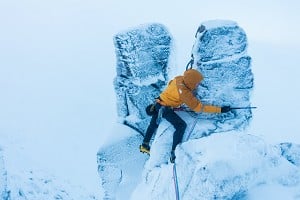
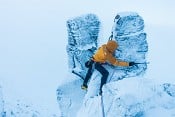




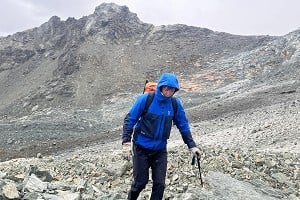



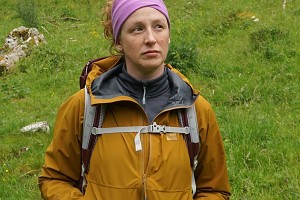

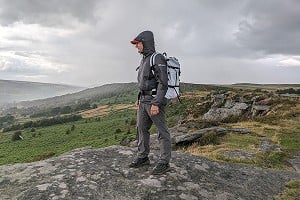

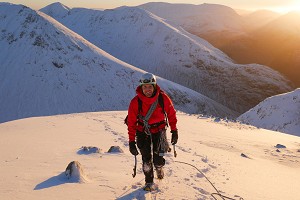


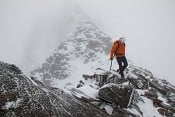
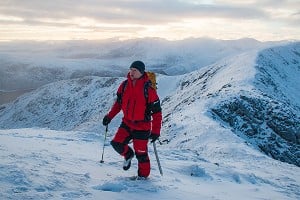
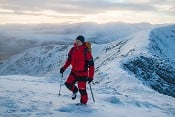
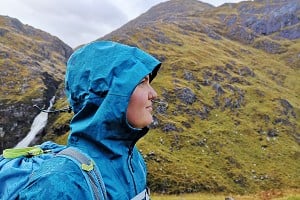
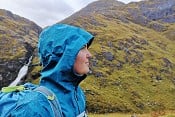


Comments